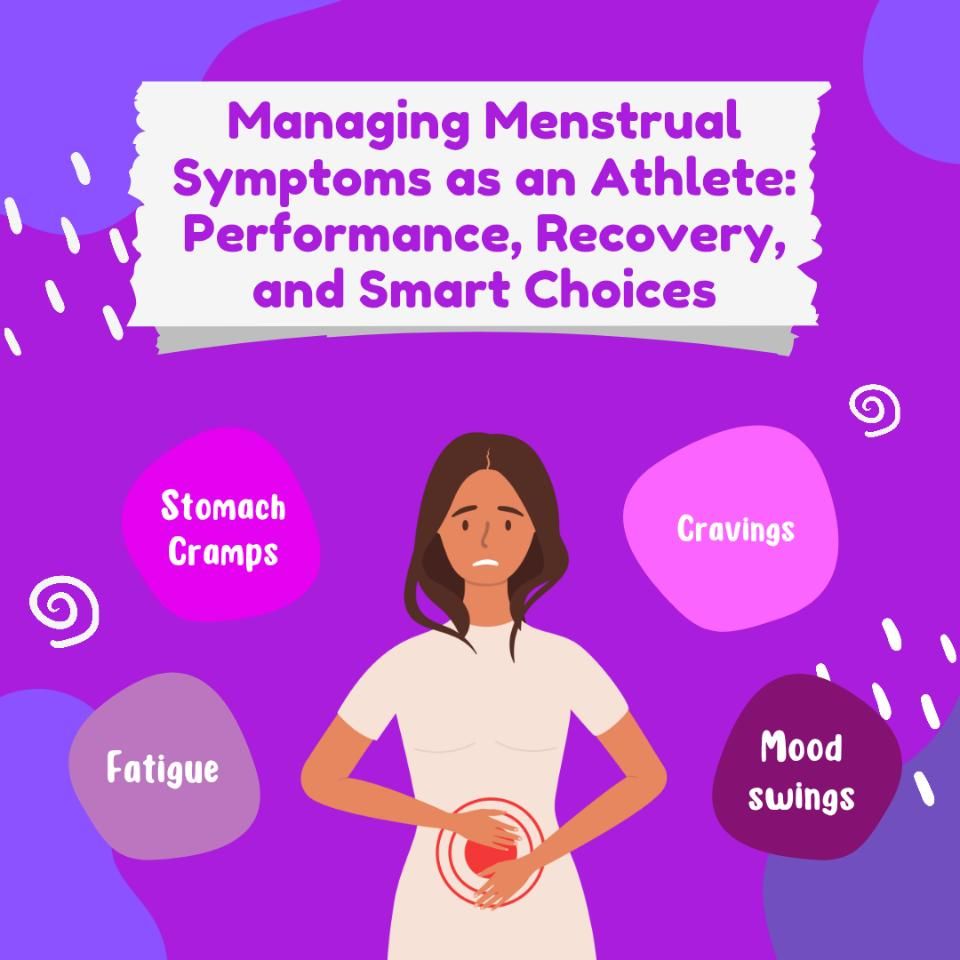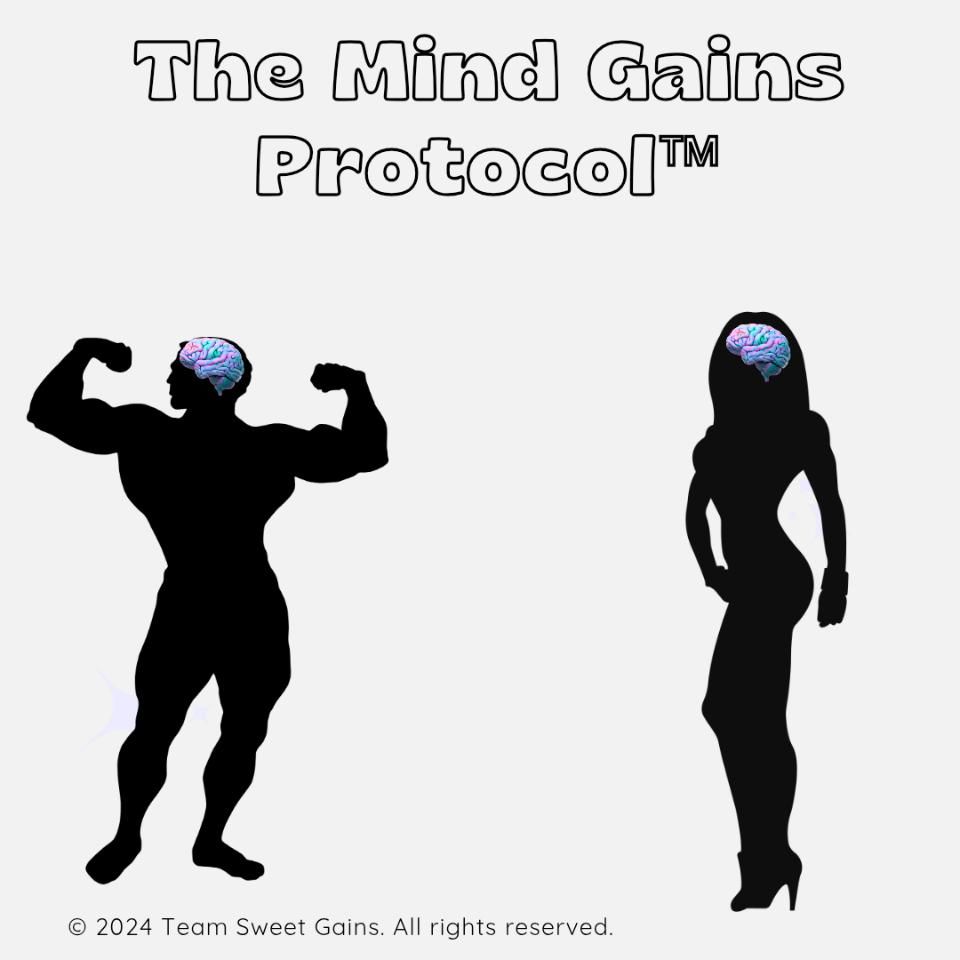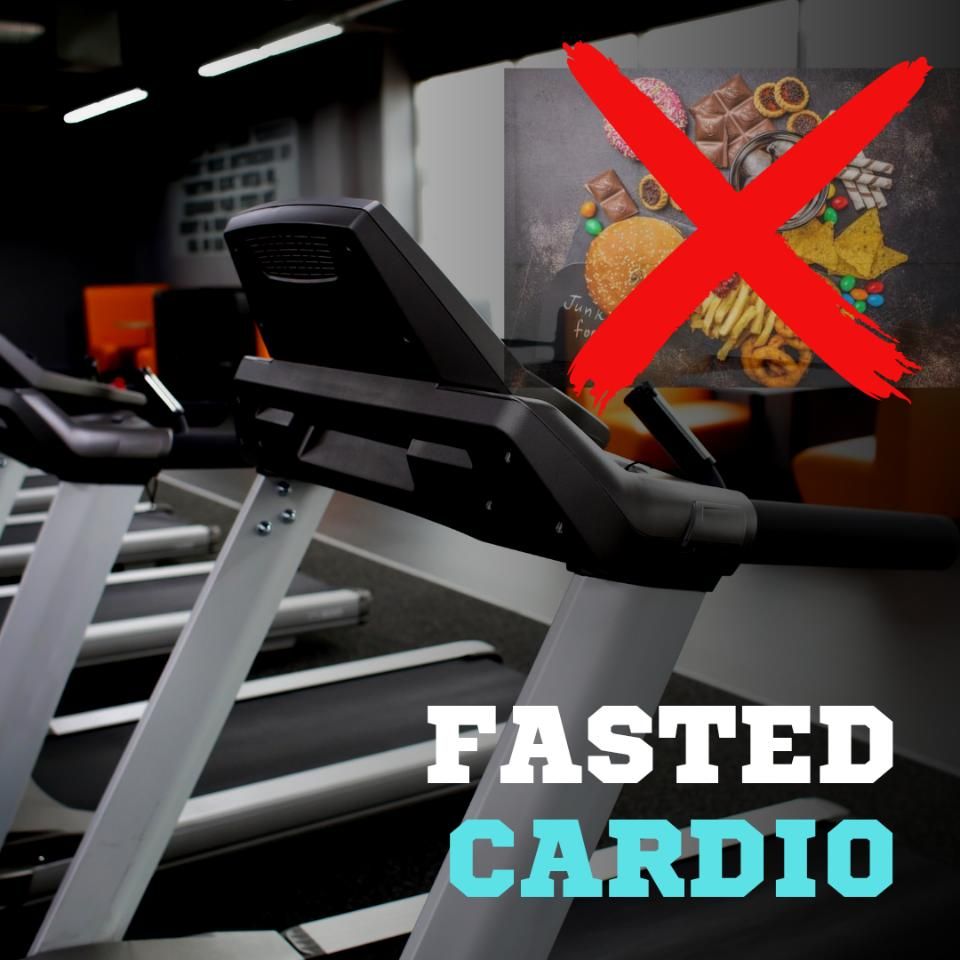

Managing Menstrual Symptoms as an Athlete: Performance, Recovery, and Smart Choices
As an athlete, dealing with premenstrual and menstrual symptoms can be a real challenge. Personally, I’ve experienced it all—from extreme bloating to painful cramps that make training feel impossible. When your sport or fitness goals revolve around how your body looks and how well it performs, it’s frustrating to feel like your progress is out of your control during that time of the month. And let’s be real—when menstrual pain hits hard, you simply can’t perform at your best.
The Reality of Menstrual Symptoms in Women
Menstrual and premenstrual symptoms (PMS) affect a huge percentage of women, with studies showing that:
Around 90% of women experience some form of PMS, including bloating, mood swings, fatigue, and headaches.
20-40% of women report PMS severe enough to interfere with daily life, including work and training.
5-10% suffer from Premenstrual Dysphoric Disorder (PMDD), an extreme form of PMS that can be debilitating.
60-80% of women experience painful menstruation (dysmenorrhea), which directly impacts athletic performance.
The unfair reality? In many countries, menstrual pain is not considered a valid reason for sick leave, leaving many women to push through discomfort. However, some nations, like Spain, Sweden, Japan, Taiwan, and Indonesia, have introduced paid menstrual leave, acknowledging how much severe period symptoms can affect work and daily activities—including training.
How the Menstrual Cycle Affects Athletic Performance
The menstrual cycle consists of four phases, each impacting energy levels, strength, and recovery differently:
- Menstrual Phase (Days 1-5): Fatigue is common due to lower estrogen and progesterone levels. Cramping and bloating can make intense workouts feel impossible. Some research suggests a slight increase in resting metabolic rate (RMR) during this phase, leading to a potential 100-300 extra calories burned per day.
- Follicular Phase (Days 6-14): Estrogen rises, increasing energy and strength. This is generally the best time for high-performance training.
- Ovulation (Around Day 14): Strength peaks, but some may experience bloating or discomfort.
- Luteal Phase (Days 15-28): Progesterone increases, leading to water retention, mood changes, cravings, and lower endurance. This phase is where weight fluctuations are most common, with water retention potentially causing a temporary weight gain of 1-3 kg (2-7 lbs).
Smart Strategies to Manage Menstrual Symptoms as an Athlete
While we can’t completely avoid these symptoms, we can make better choices to minimize their impact:
- Support Your Body with Proper Nutrition
Craving chocolate? Opt for unsweetened 100% cocoa powder in your meals. It’s rich in magnesium, which helps with muscle relaxation and mood regulation.
Craving carbs? Instead of processed snacks, go for whole foods like fruits, whole grains, rice, and whole-wheat bread. These provide steady energy without causing blood sugar crashes.
Stay hydrated. Bloating is often worsened by dehydration, so keep your water intake high.
Increase iron-rich foods. If you feel extra fatigued, include lean meats, spinach, and legumes to support red blood cell production.
- Adjust Your Training
Listen to your body. If your cramps are severe, consider skipping the gym on those days or opting for lighter activities like yoga or walking.
Train around your cycle. Plan your heaviest training sessions during the follicular phase when energy levels are naturally higher.
Prioritize recovery. Menstrual pain can make sleep quality worse, so focus on good sleep hygiene to aid recovery.
- Use Effective Pain Management Methods
Heat therapy. Warm pads or hot water bottles can significantly reduce cramps.
Magnesium supplementation. Magnesium helps with muscle relaxation and can ease cramps.
Gentle movement. If possible, light stretching or mobility work can help relieve discomfort without straining your body.
Final Thoughts
Menstruation is a normal part of life, but that doesn’t mean it’s easy—especially for athletes who need to perform at a high level. Instead of fighting against your body, the key is to work with it. By making smart nutritional choices, adjusting your training, and using effective recovery strategies, you can minimize the impact of your cycle and keep progressing toward your goals.
At the end of the day, no one expects you to be at peak performance 24/7. Honor your body, take care of yourself, and remember—long-term consistency matters far more than a few tough days each month.


Neurohacking for Athletes: Using Neuroscience to Maximize Performance, Motivation, and Recovery
The Neuroscience of Athletic Performance
Success in sports and fitness is not just about physical training—it’s also about mastering brain chemistry. Neurotransmitters like dopamine, oxytocin, serotonin, and endorphins play a crucial role in motivation, focus, recovery, pain tolerance, and emotional resilience.
Understanding how to optimize these chemicals can help athletes:
✔ Train harder and stay motivated
✔ Improve focus and concentration during competition
✔ Recover faster and reduce pain perception
✔ Manage stress, anxiety, and pressure effectively
In this guide, we’ll break down the neuroscience behind athletic success, how these brain chemicals work, and how athletes can hack their brains for peak performance and recovery—all backed by scientific research.
- Dopamine: The Motivation and Focus Enhancer
Dopamine is known as the “reward neurotransmitter”, responsible for motivation, drive, and focus. It helps athletes push through tough workouts, stay disciplined with training, and feel accomplished after achieving goals.
The Science Behind Dopamine and Performance
Dopamine modulates effort-related decision-making. A study in Neuron (2012) found that individuals with higher dopamine levels are more likely to engage in challenging tasks rather than avoiding effort.
Research in The Journal of Neuroscience (2016) shows that dopamine improves reaction time, motor control, and endurance—all essential for sports.
Low dopamine levels lead to lack of motivation, procrastination, and burnout—common reasons why athletes quit.
How Athletes Can Optimize Dopamine
✔ Set Clear, Achievable Goals: Small wins trigger dopamine release, reinforcing motivation. Track progress in a training journal or app.
✔ Use Habit Stacking: Pairing a habit (like training) with a reward (like music or positive self-talk) strengthens the dopamine loop.
✔ Eat Dopamine-Boosting Foods: Consume foods rich in tyrosine, like eggs, lean meats, nuts, and bananas.
✔ Use Music to Boost Dopamine Pre-Workout: Listening to upbeat music before training increases dopamine and enhances performance (Nature Neuroscience, 2019).
✔ Try Cold Showers or Ice Baths: These have been shown to increase dopamine by up to 250% (Biological Psychiatry, 2000).
- Oxytocin: The Social and Resilience Booster
Oxytocin, often called the “bonding hormone,” plays a key role in team sports, trust, emotional resilience, and stress regulation. It helps athletes feel connected to their teams and reduces anxiety before competitions.
The Science Behind Oxytocin and Athletic Performance
A study in Psychoneuroendocrinology (2014) found that oxytocin reduces cortisol levels, helping athletes manage competition stress.
Oxytocin improves team cohesion and trust, essential for team sports (Hormones and Behavior, 2012).
Increased oxytocin levels are linked to higher pain tolerance and faster recovery after injury (The Journal of Pain, 2016).
How Athletes Can Optimize Oxytocin
✔ Train with a Team or Workout Partner: Social training boosts oxytocin and increases motivation to perform better.
✔ Physical Contact and Encouragement: High-fives, hugs, and positive reinforcement from teammates or coaches enhance oxytocin levels.
✔ Express Gratitude: Writing down or verbalizing appreciation increases oxytocin and improves mood (Frontiers in Psychology, 2017).
✔ Help Others in Training: Supporting a teammate or coaching someone else strengthens social bonds and reinforces motivation.
- Serotonin: The Mental Strength and Mood Stabilizer
Serotonin is a mood-regulating neurotransmitter that helps athletes stay calm, confident, and emotionally stable. It also plays a key role in sleep, appetite control, and recovery.
The Science Behind Serotonin and Athletic Performance
Low serotonin levels are linked to overtraining syndrome and mental burnout (Sports Medicine, 2015).
Serotonin reduces impulsivity and increases patience, crucial for endurance sports like marathon running (Journal of Experimental Psychology, 2019).
Studies in The American Journal of Clinical Nutrition (2017) show that serotonin regulates appetite and satiety, preventing athletes from under-eating or over-eating.
How Athletes Can Optimize Serotonin
✔ Get Sunlight Daily: Exposure to sunlight boosts serotonin naturally (Neuroscience & Biobehavioral Reviews, 2018).
✔ Eat Serotonin-Boosting Foods: Foods rich in tryptophan (turkey, salmon, eggs, oats) increase serotonin production.
✔ Practice Mindfulness or Meditation: Studies show meditation increases serotonin and reduces stress (Journal of Psychiatry & Neuroscience, 2021).
✔ Prioritize Sleep: Poor sleep depletes serotonin, leading to mood swings and fatigue (Nature Communications, 2019).
- Endorphins: The Natural Painkillers and Performance Enhancers
Endorphins are the body’s natural opioids, reducing pain and creating the "runner's high" that enhances endurance and mood.
The Science Behind Endorphins and Athletic Performance
A study in The Journal of Neuroscience (2015) found that high-intensity exercise significantly increases endorphin levels, improving pain tolerance.
Endorphins reduce perceived effort, making workouts feel easier (Neuropsychopharmacology, 2020).
Post-exercise endorphins improve sleep quality and recovery (Journal of Sports Science & Medicine, 2019).
How Athletes Can Optimize Endorphins
✔ Perform High-Intensity Training: Sprinting, weightlifting, and interval training trigger the highest endorphin response.
✔ Laugh and Have Fun: Watching something funny before training boosts endorphins and reduces stress (Psychology Today, 2018).
✔ Use Heat Therapy: Sauna and hot showers stimulate endorphins and aid recovery (Scandinavian Journal of Medicine & Science in Sports, 2021).
✔ Listen to Favorite Music During Training: Studies show music enhances endorphin release, making workouts more enjoyable (Neuroscience Letters, 2019).
Practical Guide: How to Implement Neurohacking for Peak Performance
Daily Neurohacking Routine for Athletes
✅ Morning: Sunlight exposure (serotonin), cold shower (dopamine), goal-setting (dopamine)
✅ Pre-Workout: Upbeat music (dopamine, endorphins), visualization (dopamine), social connection (oxytocin)
✅ During Training: High-intensity intervals (endorphins), positive self-talk (dopamine), teamwork (oxytocin)
✅ Post-Workout: Sauna or hot shower (endorphins), gratitude practice (oxytocin, serotonin), nutritious meal (serotonin)
✅ Night: Meditation (serotonin), sleep optimization (serotonin, dopamine recovery)
Final Thoughts: Neuroscience as the Future of Athletic Performance
Athletes who understand and manipulate brain chemistry can train harder, recover faster, and stay more motivated. By applying scientific neurohacking strategies, you can unlock your full athletic potential and take your performance to the next level.
Now, go hack your brain and train like a champion!


Why Tracking Your Meals is the Key to Achieving Your Health and Fitness Goals
More Than Just “Eating Healthy”
Many people believe that “eating healthy” simply means adding more vegetables and fruits to their diet. While whole foods are essential, nutrition is not just about food choices—it’s about balance, portion control, and meeting your body’s actual needs.
Our bodies require a specific amount of energy (calories) and macronutrients (proteins, carbs, and fats) to function optimally. When we eat too much or too little, our metabolism and hunger signals become deregulated—and that’s when health problems arise. This is why tracking your meals is one of the most powerful tools to regain control over your diet and reach your goals.
- Why We Lose Touch with Our Natural Hunger Signals
When we are born, our metabolism and hunger mechanisms are perfectly functional. Babies naturally cry when hungry and stop eating when full. Their bodies instinctively regulate energy intake.
However, as we grow up, external influences—such as parents forcing children to eat more than they need, emotional eating, and unhealthy food environments—can disrupt this natural balance.
Studies show that pressuring children to eat when they are not hungry can lead to overeating habits in adulthood (Appetite, 2015).
Over time, this blunts our hunger and fullness signals, making it difficult to recognize when we actually need food versus when we are eating out of habit or emotion.
By tracking our food intake and establishing consistent meal timing, we can reset our internal system, making it function more efficiently—just as it did in the beginning.
- Science-Backed Benefits of Tracking Your Meals
A. Helps with Weight Loss and Maintenance
Tracking what you eat has been proven to be one of the most effective weight management strategies.
A 2019 meta-analysis in Obesity found that consistent food tracking is a key predictor of weight loss success.
A 2008 study in The American Journal of Preventive Medicine showed that participants who tracked their food twice as often lost twice as much weight compared to those who didn’t track.
Why does it work?
Many people underestimate how much they eat.
Tracking increases awareness of portion sizes and hidden calories.
It helps identify patterns, such as emotional eating or mindless snacking.
B. Supports Muscle Growth and Athletic Performance
For those looking to gain muscle or improve performance, tracking ensures that they are consuming enough protein, carbs, and healthy fats to fuel their goals.
A 2017 study in The Journal of the International Society of Sports Nutrition found that tracking macronutrients helps optimize muscle growth while minimizing fat gain.
Without tracking, many people under-eat protein or overconsume unnecessary calories, slowing down progress.
C. Helps Restore Natural Hunger and Satiety Cues
By keeping a structured eating routine and tracking meals consistently, people can rebuild their internal hunger regulation system.
Studies in The American Journal of Clinical Nutrition (2016) show that establishing regular meal times improves appetite regulation and metabolic health.
Tracking helps identify emotional eating triggers and guides individuals toward eating when truly hungry, not just out of habit.
- Tracking Does Not Mean Obsessing Over Calories
One common concern is that food tracking leads to obsession or disordered eating. However, studies suggest that using it as a tool for awareness—not restriction—actually promotes a healthier relationship with food (Eating Behaviors, 2020).
How to track effectively:
✔ Focus on consistency, not perfection. It’s about learning your habits, not hitting exact numbers.
✔ Use it as an educational tool. The goal is to understand your needs, not to diet forever.
✔ Combine tracking with mindful eating. Pay attention to hunger cues and satiety, rather than just numbers.
- Practical Tips to Start Tracking and Improving Your Eating Habits
Start small: You don’t need to track every gram forever. Begin by logging meals for a few weeks to understand your intake.
Use an app: Apps like MyFitnessPal or Cronometer make it easy to track without overcomplicating things.
Focus on protein & fiber: These nutrients help control hunger and improve body composition.
Keep meal timing consistent: Eating at regular times helps reset your hunger signals.
Conclusion: Knowledge is Power
Tracking your meals is not about restriction—it’s about awareness. By understanding how much and what you eat, you can take control of your diet, improve your body composition, and reconnect with your body’s natural signals.
Our bodies were designed to function perfectly, but modern dietary habits have disrupted that balance. By tracking meals and establishing regular eating routines, we can restore that balance, making our bodies function as efficiently as they did in the beginning.
Are you ready to take control of your health? Start tracking and experience the difference for yourself!


The Evolution of Finnish Fitness: How Education and Coaching Are Shaping the Future
In recent years, Finland has experienced a remarkable shift in its fitness culture. What once seemed like a niche interest has grown into a mainstream movement, with more people prioritizing health, wellness, and athletic performance. This transformation is not happening by accident. It is the result of dedicated efforts by organizations, coaches, and institutions that are raising the standards of fitness across the country.
The IFBB Nordic Academy is at the forefront of this progress, establishing itself as a cornerstone for fitness education. By providing coaches with high-quality training and deep insights into their craft, the academy is driving the rapid professionalization and growth of Finland’s fitness industry.
Finland’s Fitness Boom
The past decade has seen a significant rise in fitness-related activities in Finland. Gym memberships, group exercise classes, and competitive fitness events have become more popular than ever. Categories such as bikini fitness, men’s physique, and wellness are now well-known, with competitions attracting more participants and audiences every year.
This growing interest reflects a deeper trend. People are moving away from short-term fixes and focusing on long-term health. There is a growing demand for professional guidance from coaches who can deliver personalized and sustainable results, addressing both physical and mental well-being.
The Impact of IFBB Nordic Academy
In response to this demand, the IFBB Nordic Academy has become a leader in fitness education. Offering internationally recognized certifications, the academy provides comprehensive training that goes beyond physical fitness. The focus on understanding individual needs, promoting mental resilience, and ensuring clean sport is helping to create a new generation of coaches who are better equipped to serve their clients.
As a graduate of the IFBB Nordic Academy, I can personally attest to the depth and quality of its programs. The academy does more than train coaches. It empowers them to become leaders in their field, capable of supporting both competitive athletes and lifestyle clients.
Building Team Sweet Gains
Inspired by this focus on quality coaching, I established Team Sweet Gains in August 2024. The team is officially recognized by Suomen Fitness Urheilu and is committed to helping athletes and individuals achieve their best.
What makes Team Sweet Gains unique is its dedication to clean sport and personalized coaching. Whether guiding athletes to the competition stage or supporting clients on their fitness journey, the team prioritizes balance, sustainability, and long-term success.
As a natural athlete, I understand the value of a tailored approach. My own journey has shown me the importance of consistency, discipline, and individualized guidance. These principles form the foundation of Team Sweet Gains.
A Collaborative Future
The collaboration between the IFBB Nordic Academy and Suomen Fitness Urheilu is driving Finland’s fitness scene forward. By promoting fair play and delivering exceptional education, these organizations are ensuring that Finland stays at the forefront of global fitness trends.
The growing fitness community in Finland highlights the need for highly trained coaches who can inspire and guide this movement. It is an exciting time to be part of the industry, and I am proud to contribute as a coach, team leader, and advocate for quality education.
Why It Matters
Fitness is not just about appearances or competition. It is about improving lives, fostering healthier communities, and empowering people to become the best version of themselves. Institutions like the IFBB Nordic Academy play a vital role in this mission by setting new standards for coaching and supporting the growth of the fitness industry.
With a strong foundation in education and a commitment to clean sport, Finland is poised for an exciting future in fitness. This is only the beginning of what promises to be a powerful movement for health and wellness.


Breaking Old Habits: The Science of Change and Why It’s Worth the Effort
In today’s world, where sedentary lifestyles have become the norm, incorporating more movement into daily life isn’t just a choice—it’s a necessity. For many of us, however, making significant lifestyle changes can feel overwhelming. Breaking old habits and forming new ones is challenging, but with a deeper understanding of how habits work and a commitment to the process, meaningful transformation is possible.
The Science of Habits: Why Change Feels Hard
Habits are automatic behaviors that our brain establishes to conserve energy and make life more efficient. These behaviors are supported by neural pathways in the brain. Over time, as we repeat actions—whether healthy or unhealthy—these pathways strengthen, making the behavior almost second nature.
To create new habits or replace old ones, new neural pathways must be formed. This process takes time and deliberate effort. Research by Lally et al. (2010) highlights that forming a new habit can take anywhere from 18 to 254 days, depending on the complexity of the behavior and the individual’s circumstances. On average, it takes around 66 days, but this is not a one-size-fits-all timeframe.
The variation in time depends on factors like:
*The complexity of the habit: Building a habit of drinking more water might take less time than consistently following a structured workout routine.
*The level of motivation: Strong intrinsic motivation can accelerate the process.
*Support systems: Having accountability partners, such as coaches or supportive friends, can make a significant difference.
Commitment: The Key to Sustained Change
Commitment is the foundation of habit change. It’s important to understand that forming new habits isn’t always easy—it requires a willingness to:
- Challenge Comfort Zones: Stepping away from old routines is uncomfortable but necessary for growth.
- Stay Patient: Results don’t happen overnight, and setbacks are part of the journey.
- Be Consistent: Small, daily actions lead to long-term success.
The good news?
The more you practice a new behavior, the easier it becomes. Once the new neural pathways are established, the habit feels automatic and effortless.
Why Lifestyle Changes Are Essential Today
Modern life has drastically reduced the amount of physical activity we perform daily. Desk jobs, long hours of screen time, and convenient technologies have made us more sedentary than ever before. According to the World Health Organization, insufficient physical activity is one of the leading risk factors for global mortality.
Here’s why incorporating more movement into your life is crucial:
*Health Benefits: Regular physical activity reduces the risk of chronic diseases like heart disease, diabetes, and obesity.
*Mental Health: Exercise boosts mood, reduces stress, and improves focus and memory.
*Functionality: Staying active ensures better mobility, strength, and independence as we age.
To counteract these sedentary habits, you don’t need to overhaul your life overnight. Instead, focus on introducing small changes, such as walking more, taking the stairs, or scheduling regular workouts.
How to Build New Habits and Stick to Them
- Start Small: Begin with manageable actions. For example, if your goal is to exercise, start with 10 minutes a day and gradually increase.
- Be Specific: Set clear, actionable goals.Instead of “I want to move more,” say, “I’ll take a 15-minute walk after lunch every day.”
- Track Progress: Use tools like journals or apps to monitor your consistency. Tracking progress helps reinforce your commitment.
- Focus on the Why: Remind yourself why this change matters to you. Whether it’s for better health, more energy, or setting a positive example for others, your “why” will keep you motivated.
- Anticipate Setbacks: Life happens. Instead of giving up after a bad day, reset and refocus.
Why Movement Should Be Part of Your Lifestyle, Not a Temporary Fix
Many people approach lifestyle changes like dieting—something they can abandon once they hit their goal. But adopting more movement and healthier habits isn’t a temporary fix; it’s a long-term commitment to your well-being.
Building a new lifestyle means:
*Embracing the idea that movement is non-negotiable.
*Understanding that consistency matters more than perfection.
*Realizing that effort is required to maintain results.
The rewards of staying active—better health, improved quality of life, and greater confidence—far outweigh the challenges of making changes.
The Bottom Line
Creating a healthier lifestyle is not easy, but it is essential. By understanding the science of habits and committing to small, sustainable changes, you can overcome old routines and build a life filled with vitality and well-being.
It all starts with one step—make today the day you take it.


Why Peanuts and Cashews in Fitness Meal Plans? The Truth Behind It If You’ve Ever Wondered
When it comes to bodybuilding and fitness meal plans, certain foods seem to always make the cut. Among them, peanuts and cashews stand out as favored fat sources.
But why do these nuts dominate fitness diets?
Is it simply a matter of taste, or is there a deeper, science-backed rationale?
Let’s explore the truth behind why peanuts and cashews are so popular in fitness meal plans.
Nutritional Powerhouses: Peanuts and Cashews
Peanuts and cashews boast a nutritional profile that is both energy-dense and versatile. For every 28g:
Peanuts:
160 calories
14g fat (7g monounsaturated, 4.5g polyunsaturated, 2g saturated)
7g protein
6g carbohydrates
Cashews:
155 calories
12g fat (6.7g monounsaturated, 2.2g polyunsaturated, 2.2g saturated)
5g protein
9g carbohydrates
This balance of macronutrients—moderate protein, healthy fats, and some carbs—makes them ideal for pre-workout energy, post-workout recovery, or as part of a balanced meal. Their fat profile, particularly the high content of mono- and polyunsaturated fats, contributes to heart health and sustained energy.
Science-Backed Reasons Why Peanuts and Cashews Are Preferred
- Low Saturated Fat Content
Compared to nuts like macadamias or Brazil nuts, peanuts and cashews have relatively lower saturated fat levels. Excessive saturated fat intake has been linked to cardiovascular risks (Journal of the American College of Cardiology, 2020), making peanuts and cashews a healthier choice for fitness enthusiasts who prioritize heart health.
- Rich in Healthy Fats
The monounsaturated fats in these nuts, especially oleic acid, support cardiovascular health, reduce inflammation, and provide a steady energy source (Nutrients, 2020). For bodybuilders, these fats are essential for hormone production, including testosterone, which is crucial for muscle growth and recovery.
- Energy Density and Convenience
Peanuts and cashews are calorie-dense, making them ideal for athletes or bodybuilders in bulking phases. A small portion provides a significant caloric boost without requiring large meal sizes, which is useful for those with high energy demands.
- Protein Content
While not as high in protein as chicken or whey, peanuts and cashews still contribute a respectable amount of plant-based protein. This is particularly beneficial for vegetarians or those looking to diversify their protein sources.
- Affordability and Availability
Peanuts, technically legumes, are among the most affordable nuts, making them accessible for most people. Cashews, while pricier, are still more budget-friendly than pecans or pistachios.
Research Supporting Their Use in Fitness Diets
- Heart Health
A study published in Circulation Research (2019) found that regular consumption of peanuts and cashews improves lipid profiles, reduces LDL (bad cholesterol), and increases HDL (good cholesterol). For athletes, maintaining cardiovascular health is critical for endurance and performance.
- Weight Management
Despite being calorie-dense, nuts like peanuts and cashews do not contribute to weight gain when consumed in moderate amounts. Research in the Journal of Nutrition (2019) showed that their high satiety value helps control appetite, which can aid in fat-loss phases.
- Anti-Inflammatory Benefits
Oleic acid, a dominant fatty acid in peanuts and cashews, has been shown to reduce inflammation and support post-workout recovery (Frontiers in Physiology, 2020). This is especially beneficial for bodybuilders recovering from intense training.
- Micronutrient Content
Both nuts are rich in magnesium, which plays a key role in muscle function, nerve transmission, and energy metabolism. A study in Sports Medicine (2017) highlighted that adequate magnesium intake improves muscle strength and reduces fatigue in athletes.
Versatility in Meal Plans
Peanuts and cashews are incredibly versatile. They can be:
Blended into Smoothies: Adding a spoonful of peanut or cashew butter provides creaminess, flavor, and a caloric boost.
Eaten as Snacks: Portable and easy to portion, they are a go-to snack for busy athletes.
Incorporated into Recipes: From energy bars to sauces (e.g., satay sauce made with peanut butter), they fit seamlessly into diverse cuisines.
Alternative Nuts: Why Not Almonds or Walnuts?
While peanuts and cashews dominate, other nuts like almonds and walnuts have their merits:
Almonds: Higher in fiber and vitamin E, but lower in carbs and protein.
Walnuts: Rich in omega-3 fatty acids, beneficial for brain health and inflammation.
However, peanuts and cashews strike the perfect balance between taste, cost, nutrition, and versatility, which is why they often top fitness meal plans.
Conclusion: The Truth About Peanuts and Cashews
Peanuts and cashews are more than just tasty additions to meal plans—they are scientifically proven to support fitness goals. Their favorable fat profile, nutrient density, and versatility make them a top choice for athletes and bodybuilders. Whether you’re bulking, cutting, or simply maintaining, incorporating these nuts can provide lasting benefits to your health and performance.
So, the next time you see peanuts or cashews in your fitness plan, know that they’re there for a good reason—one rooted in science, practicality, and performance.


Fasted Cardio: Does It Really Burn More Fat? Science Says Otherwise
Fasted cardio has been one of the most debated topics in the fitness world. Many believe that doing cardio on an empty stomach forces the body to burn more fat, leading to faster fat loss. But does science actually back this up? Let’s break it down.
What Is Fasted Cardio?
Fasted cardio means performing cardiovascular exercise in a fasted state—typically in the morning before eating. The theory is that, since glycogen (stored carbs) is lower after an overnight fast, the body will tap into fat stores for energy.
This sounds logical, but does it really lead to more fat loss in the long run?
What Science Says About Fasted Cardio
Yes, You Burn More Fat During the Workout… But That’s Not the Whole Picture
Studies show that fasted cardio does increase fat oxidation during exercise compared to fed cardio. A 2016 study published in the British Journal of Nutrition found that participants burned more fat during exercise when fasted.
BUT—what matters most for fat loss isn’t how much fat you burn during exercise, but your total daily energy balance (calories in vs. calories out).
Fasted Cardio Doesn’t Lead to Greater Fat Loss Over Time
A study in The Journal of the International Society of Sports Nutrition (JISSN) (2014) compared fat loss in people doing fasted vs. fed cardio. The result? No significant difference in total fat loss when calories were controlled.
This means that even if you burn more fat during the session, your body compensates later in the day by adjusting fat and carbohydrate usage.
Performance and Muscle Preservation May Be Compromised
Fasted cardio can reduce workout intensity since glycogen levels are lower. This can lead to less effective training sessions, meaning you might burn fewer total calories.
Additionally, research suggests fasted exercise may increase muscle protein breakdown if protein intake isn’t sufficient post-workout. This is crucial for anyone looking to maintain muscle while cutting fat.
So, Is Fasted Cardio Useless? Not Necessarily.
Fasted cardio isn’t bad—it’s just not superior for fat loss. If you prefer training fasted and it fits your schedule, go for it. But if your goal is maximum fat loss, focus on:
✔️ Total calorie deficit – Fat loss happens when you burn more calories than you consume, whether cardio is fasted or not.
✔️ Workout intensity – A higher-intensity session in a fed state is likely more beneficial than a weaker session fasted.
✔️ Muscle preservation – If doing fasted cardio, make sure you get enough protein throughout the day to prevent muscle loss.


Genetics in Sports: How Much Do They Really Matter?
Genetics play a significant role in athletic performance, muscle development, and even obesity risk—but are they the deciding factor? Let’s look at what science actually says.
- Genetics and Athletic Performance
Are Elite Athletes Born or Made?
Scientific studies show that genetics contribute 30-80% to athletic performance, depending on the sport (Tucker & Collins, 2012). However, genetics alone do not guarantee success—training, nutrition, and mindset are equally crucial.
Key Genetic Factors That Influence Sports Performance
*Muscle Fiber Type: Some people naturally have a higher percentage of fast-twitch fibers (Type II), which are linked to explosive power and sprinting. Others have more slow-twitch fibers (Type I), better suited for endurance sports (Eynon et al., 2013).
*ACTN3 Gene ("The Sprint Gene"): A mutation in this gene affects fast-twitch muscle development. Athletes with the RR genotype are overrepresented in power-based sports like sprinting and weightlifting (Yang et al., 2003).
*VO2 Max & Endurance: Genetics influence how much oxygen an athlete can use during exercise. Studies suggest that 50% of VO2 max variability is hereditary (Bouchard et al., 1999).
*Recovery & Injury Risk: Some individuals recover faster due to genetic variations affecting inflammation and collagen production (Bell et al., 2019).
-Bottom Line:
While genetics provide an advantage, no one is born an elite athlete—consistent training and proper coaching maximize potential.
- Genetics and Muscle Growth
Do Genetics Determine Muscle Gains?
Yes, but not entirely. Studies show muscle growth response varies widely among individuals, even with the same training program. In one study, some subjects gained up to 4x more muscle than others despite identical workouts (Hubal et al., 2005).
- Genetic Factors That Influence Muscle Growth
- Myostatin (MSTN) Gene: This gene regulates muscle growth. Mutations in MSTN can result in extreme muscle hypertrophy, as seen in some rare cases (Schuelke et al., 2004).
- Hormonal Response: Testosterone, growth hormone, and IGF-1 levels are partially genetic and affect muscle-building potential (Handelsman et al., 2018).
- Satellite Cells & Recovery: Some people have higher satellite cell activation, allowing faster recovery and muscle repair (Petrella et al., 2008).
- Bottom Line:
Your genetics set a baseline for muscle-building potential, but training intensity, nutrition, and recovery still determine the outcome.
- Genetics and Obesity: Is It Predetermined?
Does Obesity Run in Families?
Yes, but genes don’t act alone. Studies estimate that genetics account for 40-70% of obesity risk (Locke et al., 2015). However, lifestyle factors like diet and activity level still play a major role.
Key Genetic Factors Linked to Obesity
- FTO Gene ("The Obesity Gene"): People with certain FTO variations are more prone to fat gain and hunger dysregulation (Loos & Yeo, 2022). However, exercise and diet still override genetic predisposition.
*Leptin & Ghrelin Hormones: Genetic differences in these hunger hormones can affect appetite control, making weight management harder for some individuals (Klok et al., 2007).
*Metabolism & Fat Storage: Some people genetically store more fat (especially visceral fat), increasing obesity risk (Rosenbaum et al., 2010).
- Bottom Line:
Genetics influence obesity risk, but they do not make obesity inevitable. Studies confirm that lifestyle changes can counteract genetic predisposition (Dahlgren et al., 2020).
Final Takeaways:
Can You Overcome Genetics?
- In Sports: Genetics matter, but training and strategy maximize results.
- In Muscle Growth: Some build muscle easier, but progress is possible for everyone.
- In Obesity: Genes increase risk, but lifestyle choices determine outcomes.
- Bottom Line: Genetics Are Not an Excuse—They’re Just a Starting Point.
Success in fitness or sports comes down to effort, consistency, and adaptation. Your DNA may set the baseline, but your choices determine the final result.